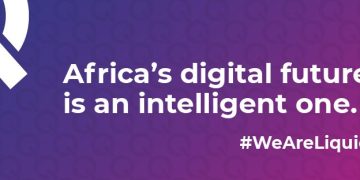By Lubinda Sinyani | Tuesday, March 26, 2024 | Lusaka
In today’s dynamic economic landscape, many individuals and businesses find themselves grappling with mounting debts and financial strain. In such situations, debt restructuring emerges as a crucial financial strategy that can offer a lifeline. For those seeking to gain a comprehensive understanding of this concept, this article aims to uncover the key concepts and advantages of debt restructuring.
Debt restructuring can be defined as the process of modifying the terms and conditions of existing loans or debts in order to achieve more favorable repayment arrangements. This may involve negotiating lower interest rates, extending the repayment period, or even forgiving a portion of the debt. By undergoing debt restructuring, borrowers can alleviate financial burdens, restore financial stability, and pave the way for a brighter financial future.
Understanding the intricacies and benefits of debt restructuring is essential for individuals and businesses facing financial challenges. This article will delve into the fundamental concepts of debt restructuring, shed light on the advantages it brings, and provide guidance on navigating this complex process effectively.
Whether you are an individual burdened by debt or a business seeking to regain financial footing, this article will equip you with the knowledge and insights needed to make informed decisions and successfully navigate the realm of debt restructuring.
Debt restructuring encompasses various approaches that can be tailored to meet the specific needs of borrowers. These approaches can be broadly classified into three main types: refinancing, rescheduling, and debt forgiveness.
Refinancing involves replacing existing debt with a new loan that offers more favorable terms, such as lower interest rates or longer repayment periods. This allows borrowers to reduce their monthly payments and potentially save on interest costs over the long term. Refinancing is commonly used by individuals with high-interest credit card debt or businesses with expensive loans.
Rescheduling, on the other hand, involves renegotiating the repayment terms of existing debt without fundamentally changing the underlying loan agreement. This may include extending the repayment period, adjusting interest rates, or modifying payment schedules. Rescheduling is often used by borrowers who are facing temporary financial difficulties but have the capacity to meet their obligations in the future.
Debt forgiveness, the third type of debt restructuring, involves the partial or complete cancellation of outstanding debts. This is typically done in situations where the borrower is unable to repay the debt in full due to extreme financial hardship. Debt forgiveness can provide significant relief to borrowers, allowing them to start afresh without the burden of unmanageable debt.
Debt restructuring offers several advantages to borrowers who find themselves overwhelmed by financial obligations. Firstly, it provides an opportunity to reduce the overall debt burden. Through negotiation and modification of loan terms, borrowers can secure lower interest rates, resulting in decreased monthly payments and potential savings in interest costs over time. This can significantly alleviate financial strain and allow individuals and businesses to regain control over their finances.
Secondly, debt restructuring can help to improve credit scores. By meeting modified repayment arrangements and demonstrating a commitment to repaying debts, borrowers can rebuild their creditworthiness. This can open doors to future borrowing opportunities and enable individuals to access credit on more favorable terms.
Thirdly, debt restructuring offers a pathway to financial stability and peace of mind. By addressing existing debt issues and implementing a manageable repayment plan, borrowers can regain control over their financial situation. This can reduce stress, improve mental well-being, and pave the way for a brighter financial future.
Despite the benefits it can bring, debt restructuring is often surrounded by misconceptions that can deter individuals and businesses from considering this option. It is important to address these misconceptions to dispel any doubts or fears.
One common misconception is that debt restructuring is a sign of financial failure or irresponsibility. However, it is essential to recognize that debt restructuring is a proactive financial strategy aimed at addressing and resolving financial challenges. It is a responsible approach to managing debt and should not be seen as a reflection of personal or business failure.
Another misconception is that debt restructuring will permanently damage credit scores. While it is true that debt restructuring can initially have a negative impact on credit scores, it is important to consider the long-term benefits. By successfully navigating the debt restructuring process and meeting modified repayment arrangements, borrowers can rebuild their creditworthiness over time.
Furthermore, some individuals may fear that debt restructuring will result in legal consequences or damage their relationships with lenders. In reality, debt restructuring is a collaborative process that involves negotiations between borrowers and lenders. Lenders are often willing to work with borrowers to find mutually beneficial solutions and avoid legal action.
To navigate the realm of debt restructuring effectively, it is important to understand the key concepts that underpin this process. One fundamental concept is the debt-to-income ratio. This ratio compares a borrower’s total debt obligations to their income. Lenders often consider this ratio when assessing a borrower’s ability to repay debts. Understanding and improving this ratio can increase the chances of successfully restructuring debts.
Another key concept is the role of collateral. Collateral refers to assets that borrowers pledge to secure a loan. In the event of default, lenders have the right to seize and sell these assets to recover their losses. Collateral plays a significant role in debt restructuring as it can affect the terms and conditions offered by lenders. Understanding the value of collateral and its implications can help borrowers negotiate better terms during the restructuring process.
Additionally, understanding the legal framework surrounding debt restructuring is crucial. Different jurisdictions may have varying laws and regulations governing debt restructuring. Familiarizing oneself with these legal aspects can ensure compliance and protect the rights of borrowers throughout the process.
The debt restructuring process typically involves several steps that borrowers need to navigate. The first step is to assess the financial situation and determine the need for debt restructuring. This involves gathering and analyzing financial information, such as outstanding debts, income, and expenses. It is crucial to have a clear understanding of the current financial position before proceeding with debt restructuring.






































